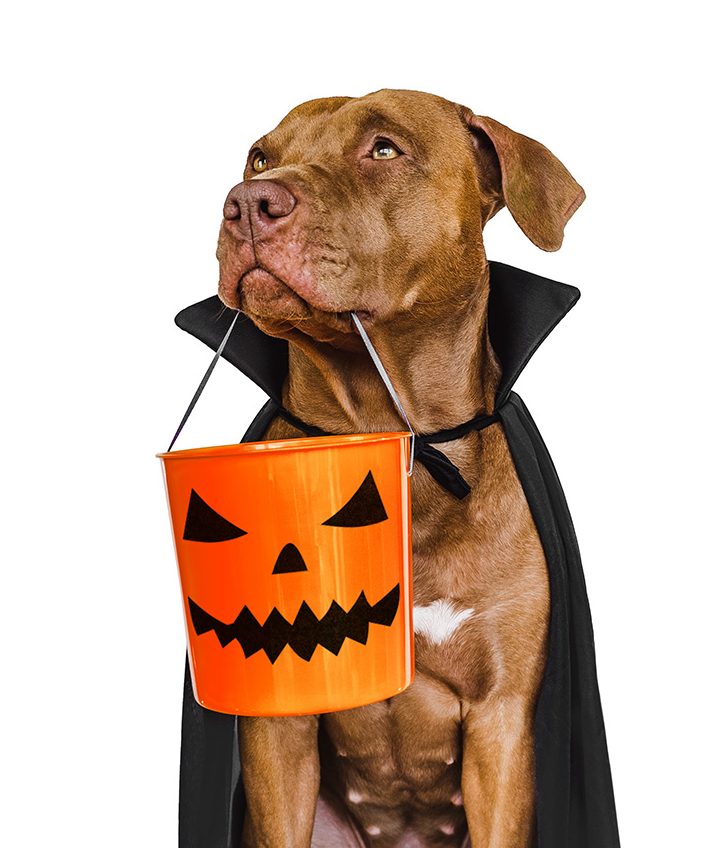Pets differ in their personality traits just like people. Some of the most common dog personality traits are the “excitable/hyper attached,” anxious/fearful,” “aloof/predatory,” “reactive/assertive,” and calm/agreeable.” Depending upon your dog’s personality types will mostly determine how he/she will react to Halloween and wearing Halloween costumes. Therefore, some may love the hustle and bustle of Halloween with costumes and masks, lights and decorations, doorbells ringing and a constant parade of trick-or- treaters, while others may find it a bit stressful, fearful and spooky. So, whatever your dog’s personality trait, let’s learn some safety tips to help keep them and your visitors safe on Halloween.
These safety tips may protect your pets and visitors and reduce the risk of them being hurt, poisoned or lost:
• Keep your pets on a leash if you are taking them outside. Dogs can be easily excited by the Halloween commotion, and a bite or a lost dog will quickly end the evening’s fun. Remember masks and costumes change how people look and smell to a pet, so even a familiar person may be frightening.

• Before trick-or- treaters start, put your pet(s) in a quiet room where they will be safe from Halloween activity. Put a sign on the door so your guests, if you are having a Halloween party, know it is off limits.
• Do not feed your pets Halloween treats. Raisins can cause your pet’s kidneys to fail, and many foods may contain substances toxic to pets such as chocolate, gum, and xylitol (a common sugar substitute found in sugar-free candies and gum). Watch your children. They may make the harmful mistake of sharing their candy. Keep the 24-hour ASPCA Animal Poison Control Center hotline handy: 888-426-4435. If you suspect your pet has eaten something that may be harmful to them call your veterinarian or the Poison Control Center immediately.
• Keep Halloween decorations, wires, lit candles, jack-o-lanterns out of the reach of your pets. Pets are very inquisitive like children and tend to explore the world with their mouths.
If you plan to put a costume on your pet, make sure it follows these guidelines:
- It fits properly and is comfortable
- It does not have any pieces that can be easily chewed off or cause choking
- It does not block your pet’s sight, hearing, breathing, mouth, or movement.
To lessen undue stress on your pets, it may be wise to take time before Halloween to get your pet accustomed to the costume, and never leave a costumed pet unsupervised. By following these suggested safety tips, you help Keep an Eye on Safety during Halloween for you, your pet dog and your visitors.




